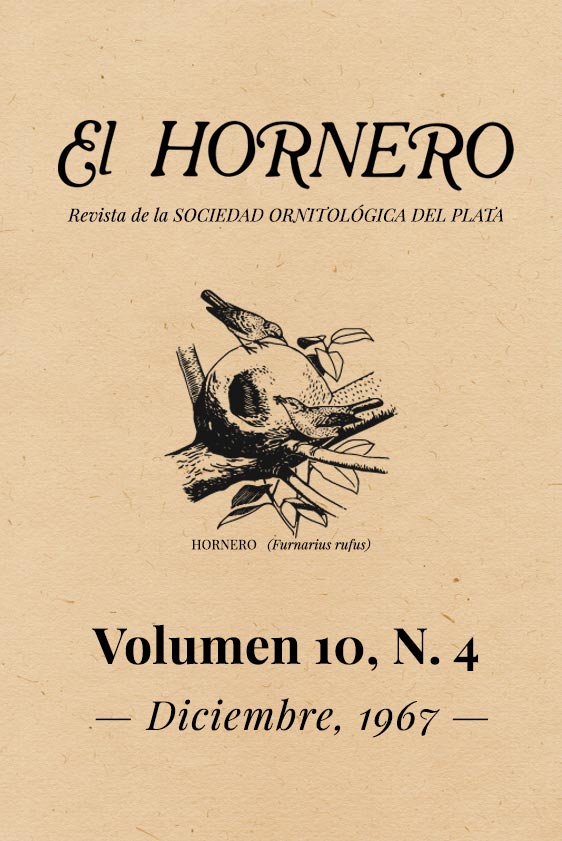Abstract
During the winter months (March to September), a change is noted in the colouring of the culmen in both sexes, which becomes paler and marked with irregular black patches. Such markings can be observed in specimen skins even after many years. Due to hormonal action at times of sexual excitement, the shafts of the rectrices undergo a pronounced curvature of variable extent and duration, more marked in the males but also shown by females. Whitish tips to the cinnamon-coloured undertail coverts, giving a scaly appearance, are absent in individual cases. The white areas on the tail feathers vary in extent and shape with each moult. In examples from Córdoba and Tucumán, these areas measured 17 mm in length and may reach to the edge of the web, but this characteristic is insufficient to separate the subspecies griseiventris from analis, as determined by Hellmayr, inasmuch as these markings are variable and therefore only plumage phases. Young males may be recognized by a band of chestnut-coloured feathers on the forehead. Just before the colour change of the beak, the birds are restless, followed by a period of winter calm, when they are silent, only singing again when the culmen regains its yellow colour. The eggs, which are turquoise blue with a ring of reddish spots on the wider end, are laid from October onwards, between eight and nine in the morning, and measure 18 to 20 mm by 11 to 13 mm, weighing about one gram.
References
Este artículo no cuenta con referencias // This article does not have references

This work is licensed under a Creative Commons Attribution-NonCommercial 4.0 International License.





